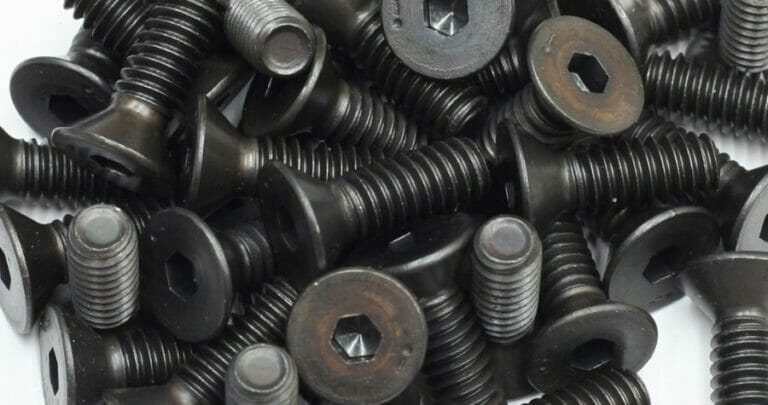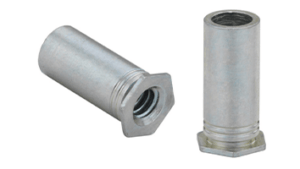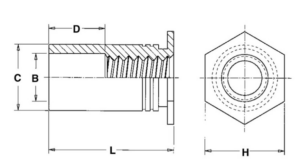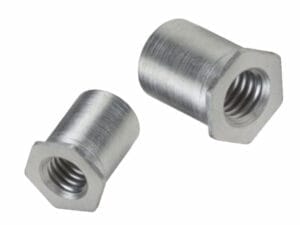SendCutSend doesn’t offer black oxide as one of our many services, but we did want to share some information to help you make the best decisions for your parts.
What is Black Oxide Coating?
Black oxide is a chemical conversion process used to blacken the surface of a part without adding a thick coating. A chemical conversion process uses a chemical solution to force a reaction on the surface of the part rather than a plating or coating process which adds a thicker layer on top of the base material. Black oxide is most commonly done for ferrous metals (metals containing iron), but there are ways to black oxide other metals such as copper and stainless steel which are designed specifically to resist surface reactions. The appearance of the finish is usually black or a dark bluish-black. It can be glossy or matte, usually depending on the finish of the part before the process and the post-conversion treatment applied after blackening.
Black oxide is referred to by several different names. Black oxide, blackening, bluing, cold bluing, gun bluing are some of the names for similar black oxide processes. There are some slight differences we’ll discuss a little later. Some sources incorrectly lump black phosphate processes in with black oxide. While both can create a blackened surface, they are not the same process.
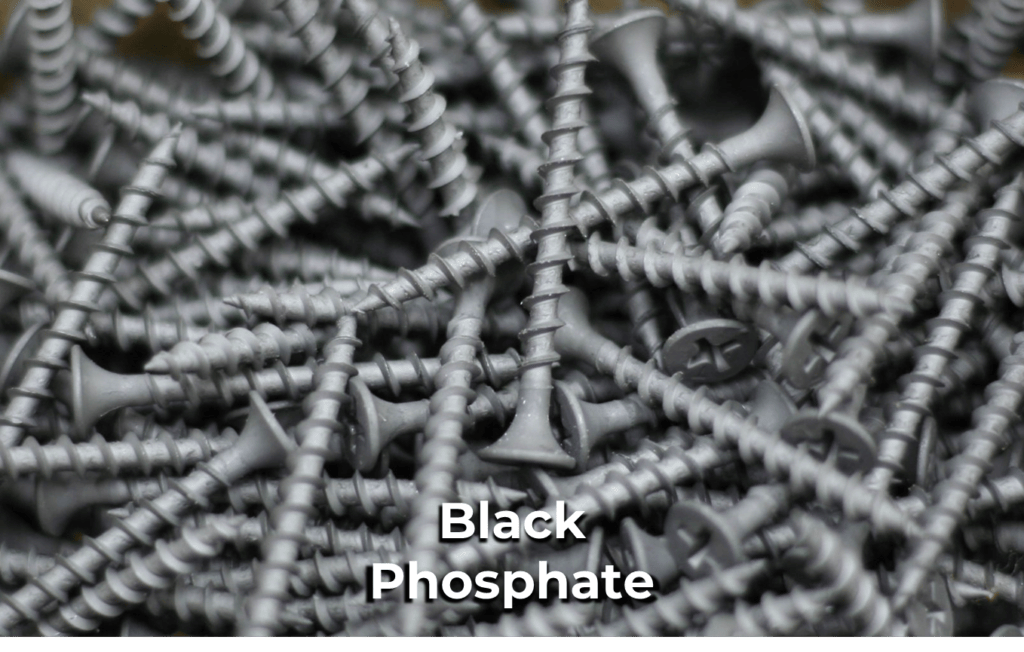
Is Black Oxide Rust?
You may be thinking “Iron oxide? Isn’t that rust?”. Rust, the red flakey oxide that forms on ferrous materials like steel and iron, IS a form of iron oxide, however it’s a slightly different form that isn’t as strong or stable as the black oxide form. The stronger form produced during the black oxide process is called magnetite. If you want to get really technical, red oxide or rust is Fe2O3, where black oxide is Fe3O4. Note that not all black oxide processes produce the same results.
Types of Black Oxide Coating
Black oxide processes are easily split into 3 categories. Hot, mid-temperature and cold or room temperature process. The differences between hot and medium-temp processes are basically just temperature. They both form the same blackened magnetite surface finish on ferrous parts, but in the hot black oxide process, the chemical bath is heated to a boil where the mid-temp process is kept below a boil. The reason for the difference is that the hot process is faster (can be done in less than 10 minutes), but the boiling creates undesirable fumes. The mid-temp process can take anywhere from 20 to 60 minutes, but because the chemical bath isn’t boiled, far fewer fumes are produced.
As with most things, there are trade-offs. The hot process typically produces a more durable surface than the mid-temp. There can also be slight differences in appearance between the two, but you wouldn’t be able to distinguish which process was used by just a visual inspection.
The black sheep (ridiculous pun intended) of the family is the cold process. Sometimes called cold blue, cold bluing, or cold black oxide, all the names are a bit of a misnomer. First, it isn’t technically cold, it’s room temperature. Second, it isn’t a chemical conversion that forms an iron oxide layer. It’s actually a copper selenium compound coating the surface. The “cold” process doesn’t usually produce a finish that is as durable or consistent in appearance as the higher temperatures cousins. Cold black oxide solutions are useful for touch-ups on black oxide parts.
Common Misconception
It’s a common misconception that black oxide parts are corrosion resistant. In reality, a part that has ONLY been blackened by the process isn’t much more resistant to rusting than a bare steel part. What provides an increased level of protection (a minor increase) is that black oxide parts are coated in oil, wax or sometimes a lacquer finish. For this reason, black oxide finishes should be reserved for parts that are not used in environments where corrosion is a concern OR on parts that are cared for with regular oiling.
Is Black Oxide Coating Good? Advantage and Disadvantages
Advantages
- Cost – One of the big advantages of black oxide is its cost. Especially relative to other protective finishes. This is a case of getting what you pay for however, since black oxide doesn’t offer the same level of protection as finishes like zinc plating or powder coating.
- Dimensions – Since black oxide doesn’t leave a thick film on the surface, it’s an excellent finish for tightly toleranced parts. Machine tools and fixtures are commonly black oxide finished for this reason and the fact that they are usually in controlled environments and regularly maintained.
- Appearance – In many products a particular appearance is important. You can’t always paint or powder coat parts, especially when tolerances are important, so black oxide can give a dark, low-reflectivity look. Black oxide is not always uniform in appearance though, so don’t expect it to look as good as powder coat or that all black oxide finished parts will match.
- Lubricity – The surface of black oxide is very porous, meaning it absorbs and holds onto the after-finish sealant (often oil). This has the benefit of providing more lubricity between moving parts than other finishes.
- Hydrogen Embrittlement (or lack of) – Without getting too technical, hydrogen embrittlement is an effect that’s caused by certain chemical and electroplating processes where hydrogen molecules get absorbed into the material making it more brittle. Cracks from hydrogen embrittlement can be a serious issue for structural parts when they get certain finishes. An advantage for black oxide is that it doesn’t suffer from hydrogen embrittlement issues.
Disadvantages
- Corrosion Resistance – While a black oxide finish is porous and absorbs oil well, it’s only that oil (or other sealant) that offers any protection against corrosion. As far as finishes go, black oxide is one of the worst options for corrosion resistance.
- Durability – While a proper black oxide finish shouldn’t flake or rub off, it’s not as durable as a lot of other finish options.
Uses and Applications of Black Oxide
Black oxide is used in different industries due to its corrosion resistance and strength, plus its versatile finish for different materials. With its unique set of advantages and disadvantages, there are certain parts particularly suited to black oxide.
- Gears – Tight tolerances, contact surfaces and the fact they are commonly bathed in oil make black oxide a common finish for gears.
- Firearms – Black oxide is frequently used on firearms where precision fits between parts and high lubricity are desirable. Most firearms are regularly cleaned and oiled so a high level of corrosion protection isn’t necessary.
- Fasteners – Screws, nuts, bolts are all available with a black oxide finish. Dimensional stability and lubricity work well in threaded parts. The dark appearance can help fasteners stand out less in applications where that’s a benefit. Black oxide fasteners that are used for exterior applications are likely to rust very quickly.
- Tools and Fixtures – Hand tools and fixtures are used in controlled environments and regularly cleaned and oiled. Black oxide holds onto that oil and provides more protection than uncoated steel parts.
Materials Used with Black Oxide Coating
Here are some materials that are compatible with a black oxide coating:
Carbon Steel
Black oxide coating is commonly used on carbon steel parts due to its durability and corrosion resistance. It is commonly applied to machine parts, tools, and fasteners.
Stainless Steel
Stainless steel is a common material that is often used in harsh environments due to its corrosion resistance. Black oxide coating can provide an additional layer of protection to stainless steel parts.
Copper
Black oxide coating is often used on copper parts to create an ebonol c finish. This finish is commonly used on plumbing fixtures, electrical components, and decorative items.
Zinc
Black oxide coating can also be used on zinc parts to create an ebonol z finish. This finish is commonly used on hardware, automotive parts, and decorative items.
Brass
Brass is a material that is often used for decorative purposes. Black oxide coating can be used on brass parts to create a unique and durable finish.
Aluminum
Black oxide coating can be applied to aluminum parts to create a black finish. This finish is often used for decorative purposes and can provide an additional layer of protection against corrosion.
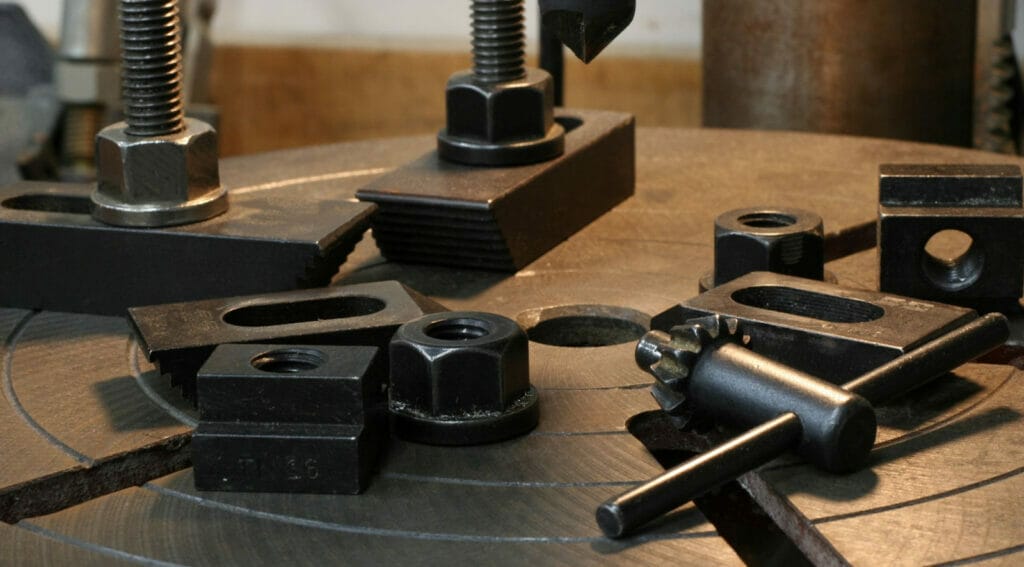
The Black Oxide Process
The black oxide process, whether we’re discussing hot, mid-temp or cold, is similar to most chemical conversion coatings. The differences are in the specific chemical solutions in the bath and in this case, the temperatures.
- Nearly all chemical conversion coating processes, including black oxide, start with the part being clean. Not just soap and water clean, but extremely clean. The cleaner a part, the better the chemicals can react with the surface.
- The part is next rinsed, typically in distilled water, to remove any cleaning solutions from the previous step.
- Parts with corrosion or scale are put through a pickling or similar process to remove as much as possible from the substrate.
- Again, the parts are immediately rinsed in distilled water to remove any contaminants on the surface from the previous step.
- Next, the parts are submerged into the hot bath (or room temp). For black oxide, this is an alkaline solution of oxidizing salts, sodium hydroxide, nitrates, nitrites, etc. all parts of a balanced breakfast. Depending on the desired finish or temperature, the parts are left in the solution for a specific period of time.
- For a final time, the parts are thoroughly rinsed in distilled water to remove any blackening solution and stop the conversion process.
- The final step, and one of the most important and overlooked, is that the parts receive an after-finish sealant. Most often this is simply oil, but wax is also common. In any case, the parts must be coated to protect them from rusting. Without this finishing step, black oxide parts can rust just as quickly as bare steel.
Can I Do a Black Oxide Finish at Home?
Absolutely! A lot of home machinists and fabricators apply a black oxide finish to their parts, especially custom tools and fixtures. The easiest way to blacken parts at home is a cold/room temp process. There are countless suppliers of cold blue solutions for submerging or brushing on. For the best results, choose a quality solution and all the same cleaning and prep should be done, but there’s no need to heat the solution. Although heating the solution or the parts can sometimes speed up the process and help make the finish more uniform. The important part to remember when giving your parts a black oxide finish is to apply a sealant immediately afterwards. Oil is the most common and easiest. You’ll also want to regularly reapply a coating of oil (or your sealant of choice) to maintain a level of protection.
If you want to go with a mid-temperature black oxide (we’d avoid the hot process at home due to the production of fumes), you can buy the supplies from various sources like Caswell Plating or Birchwood.
FAQs around Black Oxide Coating
The cost of black oxide coating can vary depending on the size, complexity, and quantity of the parts being coated. Generally, the cost of black oxide coating is relatively low compared to other types of coatings, making it a cost-effective option for many applications. However, the actual cost will depend on a variety of factors, so it’s best to consult with a professional coating service provider to get an accurate quote for your specific needs.
Black oxide coating is generally considered to be a more environmentally friendly option than some other types of coatings, such as electroplating or painting because it is a chemical conversion process that does not involve the use of heavy metals or other harmful materials. The black oxide coating process uses a solution of sodium hydroxide, nitrites, and other chemicals to convert the surface of the metal into a black oxide finish. While these chemicals can be hazardous if not handled properly, they are generally less harmful than some of the chemicals used in other types of coatings.
While there are plenty of applications where black oxide can be an appropriate finish, it’s not right for everything. If you want a black finish but need better protection, consider black zinc plating or powder coating. If you have aluminum parts, anodizing is an excellent alternative and is available in black.
Level Up Metal Parts with SendCutSend
There are several benefits to black oxide coating as one of the many finishing options you can put on your parts. At the time of writing this article, SendCutSend does not offer black oxide coating but we do offer great alternatives such as black zinc plating, powder coating and anodizing. When you order your custom parts from SendCutSend you can add finishing services right to your cart so that your part is complete when it arrives at your door. Upload your design today, or reach out to our team with questions.
